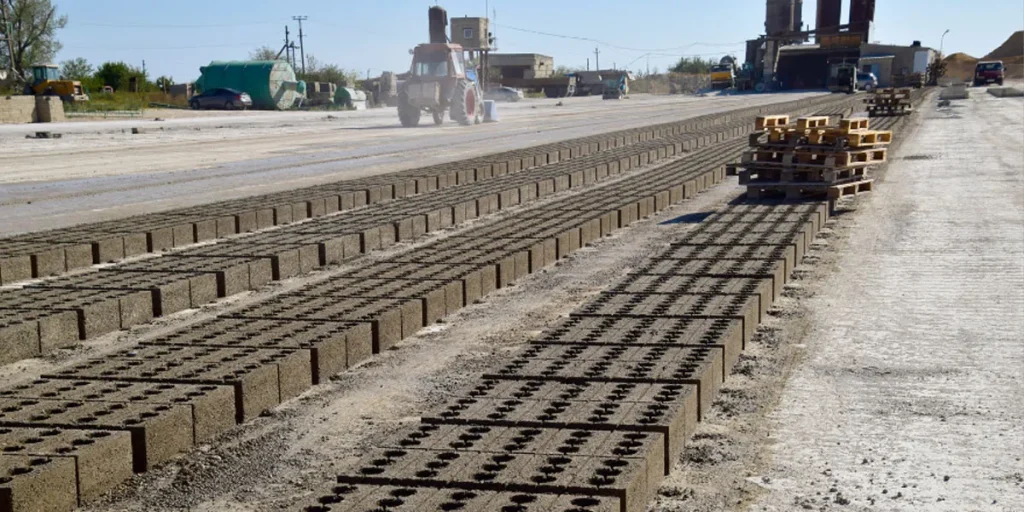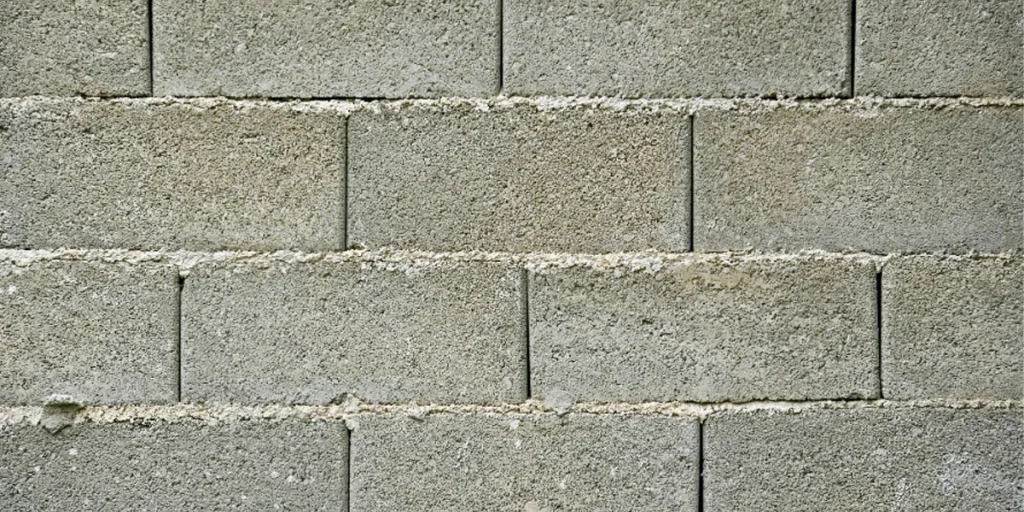A typical cinder block weighs between 28 to 35 pounds. The exact weight can vary depending on the size and material composition.
Cinder blocks, often referred to as concrete masonry units (CMUs), are widely used in construction due to their strength and durability.
They serve as the building blocks for many structural walls and foundations.
Their substantial weight, derived from a mix of Portland cement and aggregate materials, ensures stability and resistance to environmental stressors.
Crafting solid and dependable structures, cinder blocks are integral to both residential and commercial construction projects.
Builders prefer them not only for their robustness but also for their cost-effectiveness and versatility in various applications.
Understanding the weight of cinder blocks is crucial for engineers and architects in the planning and development phases of construction to ensure proper handling and structural integrity.

Cinder Block Basics
Cinder blocks serve as the backbone for many construction projects. Users often choose them for their durability and cost-effectiveness.
These blocks are crucial in shaping robust structures ranging from simple garden walls to large buildings.
Composition And Uses
Cinder blocks are made from a blend of ash, cement, and aggregate. This mixture ensures a balance between strength and weight, making them a favorite for builders. They are commonly used in:
- Building foundations
- Exterior walls
- Retaining walls
- Fireproofing structures
Common Sizes And Shapes
These blocks come in a variety of shapes and sizes, tailored to fit different construction needs. Important measurements include:
| Size (Inches) | Weight (Pounds) | Use Case |
|---|---|---|
| 8 x 8 x 16 | 28-35 | Most common for walls |
| 6 x 8 x 16 | 25-30 | For thinner walls |
| 4 x 8 x 16 | 17-22 | Partition walls |
Weight Factors
Understanding the weight of a cinder block requires examining various factors. These blocks can vary in weight.
The materials they are made from and their size affect this. Let’s delve into material densities and dimensional variations.
Material Densities
The composition of a cinder block significantly influences its weight. Concrete, sand, and aggregate are common components.
Different densities of these materials result in different weights.
- Lightweight blocks use less dense aggregate.
- Medium weight blocks blend strength and density.
- Heavyweight blocks maximize density for strength.
Dimensional Variations
Cinder blocks come in various sizes. Their dimensions affect total weight. Standard blocks measure 8″x8″x16″. Yet, blocks can be larger or smaller.
| Dimension | Approx. Weight |
|---|---|
| 8″x8″x16″ Full | 36-40 lbs |
| 8″x8″x8″ Half | 18-20 lbs |
| 4″x8″x16″ Partition | 28-30 lbs |
Different sizes cater to various construction needs. A larger block is typically heavier. A block’s actual weight can differ from the average.
Average Weights

Knowing the average weight of a cinder block helps in planning construction projects. The weight impacts transportation, building stability, and the physical strain on builders.
Different types of blocks have different weights. This guide provides the information for builders, DIY enthusiasts, and homeowners.
Standard Cinder Block
Cinder blocks, often found in building foundations, come in a standard size. This size is typically 16 inches long by 8 inches high by 8 inches deep.
A standard cinder block weighs on average 30 to 35 pounds (13.6 to 15.9 kg).
| Block Type | Dimensions (LxHxD) | Average Weight |
|---|---|---|
| Standard Cinder Block | 16″x8″x8″ | 30-35 lbs |
Half And Corner Blocks
Half and corner blocks serve specific purposes. Half blocks measure 8 inches long by 8 inches high by 8 inches deep.
A half block typically weighs 15 to 20 pounds (6.8 to 9.1 kg).
- Corner Blocks complement corners or ends of walls. They feature a 90-degree angle.
| Block Type | Dimensions (LxHxD) | Average Weight |
|---|---|---|
| Half Block | 8″x8″x8″ | 15-20 lbs |
| Corner Block | 16″x8″x8″ | 30-35 lbs |
Calculating For Projects

When embarking on a construction project, knowing the weight of a cinder block is crucial.
This knowledge helps ensure that your plans match both the physical requirements and safety standards needed.
Estimating Quantities
The first step in project planning involves determining how many cinder blocks you will need. Here’s a simple process:
- Measure the length and height of the wall you’re constructing.
- Check the dimensions of the cinder block you’ll be using.
- Calculate the total number of blocks by dividing wall area by block area.
Remember to account for mortar gaps and waste for accuracy.
Total Weight Considerations
The weight of each cinder block can vary based on its size and composition. A standard cinder block usually weighs between 28 to 35 pounds.
Multiply the total number of blocks by the weight of one to find the total weight. Let’s create a table for common project sizes:
| Project Size (sq ft) | Blocks Needed | Weight per Block (lbs) | Total Weight (lbs) |
|---|---|---|---|
| 50 | 100 | 30 | 3000 |
| 100 | 200 | 30 | 6000 |
| 150 | 300 | 30 | 9000 |
Keep in mind, delivery and the strength of your foundation must support the total weight estimated.
Handling And Safety
Working with cinder blocks requires care and strength. These blocks weigh a lot. They can hurt you if not handled right. Let’s talk about safe ways to move and work with them.
Lifting Techniques
Lifting cinder blocks the right way is key to staying safe. Always remember these points:
- Stand close to the block.
- Bend your knees, not your back.
- Use both hands to grip the block.
- Keep your back straight as you lift.
- Lift with your legs, not your back.
Load Bearing Limits
Knowing the limits helps prevent accidents. Follow these guidelines:
| Type of Block | Weight per Block | Max Load |
|---|---|---|
| Standard Cinder Block | About 30 lbs | 1,700 lbs |
| Lightweight Block | About 20 lbs | 1,050 lbs |
Never stack blocks higher than recommended. Spread the weight evenly to stay safe.
FAQs About the Weight of a Cinder Block
What Is The Weight Of A Standard Cinder Block?
A standard cinder block, typically sized at 16x8x8 inches, weighs approximately 30 to 35 pounds. The exact weight can vary based on the block’s density and the materials used.
Are All Cinder Blocks The Same Weight?
No, cinder block weights can vary. Factors such as size, material composition, and hollow vs. solid construction influence the weight.
Lightweight versions can weigh as little as 28 pounds, whereas heavier blocks may weigh over 40 pounds.
How Does Size Affect Cinder Block Weight?
The size of a cinder block directly affects its weight. Larger blocks contain more material, which increases weight.
Conversely, smaller blocks or those with hollow centers are lighter, making them easier to handle during construction.
Can Weather Affect A Cinder Block’s Weight?
Weather does not significantly affect the weight of a cinder block. These blocks are made of concrete, which is not very porous, so they do not absorb enough water to noticeably alter their weight in different weather conditions.
Conclusion
Wrapping up, a cinder block’s weight can greatly vary. It hinges on size, materials, and hollow portions. Lighter composite versions exist beside the standard heavier blocks.
Whether it’s for construction needs or project planning, this information is vital. Always prioritize safety with the correct handling techniques.
